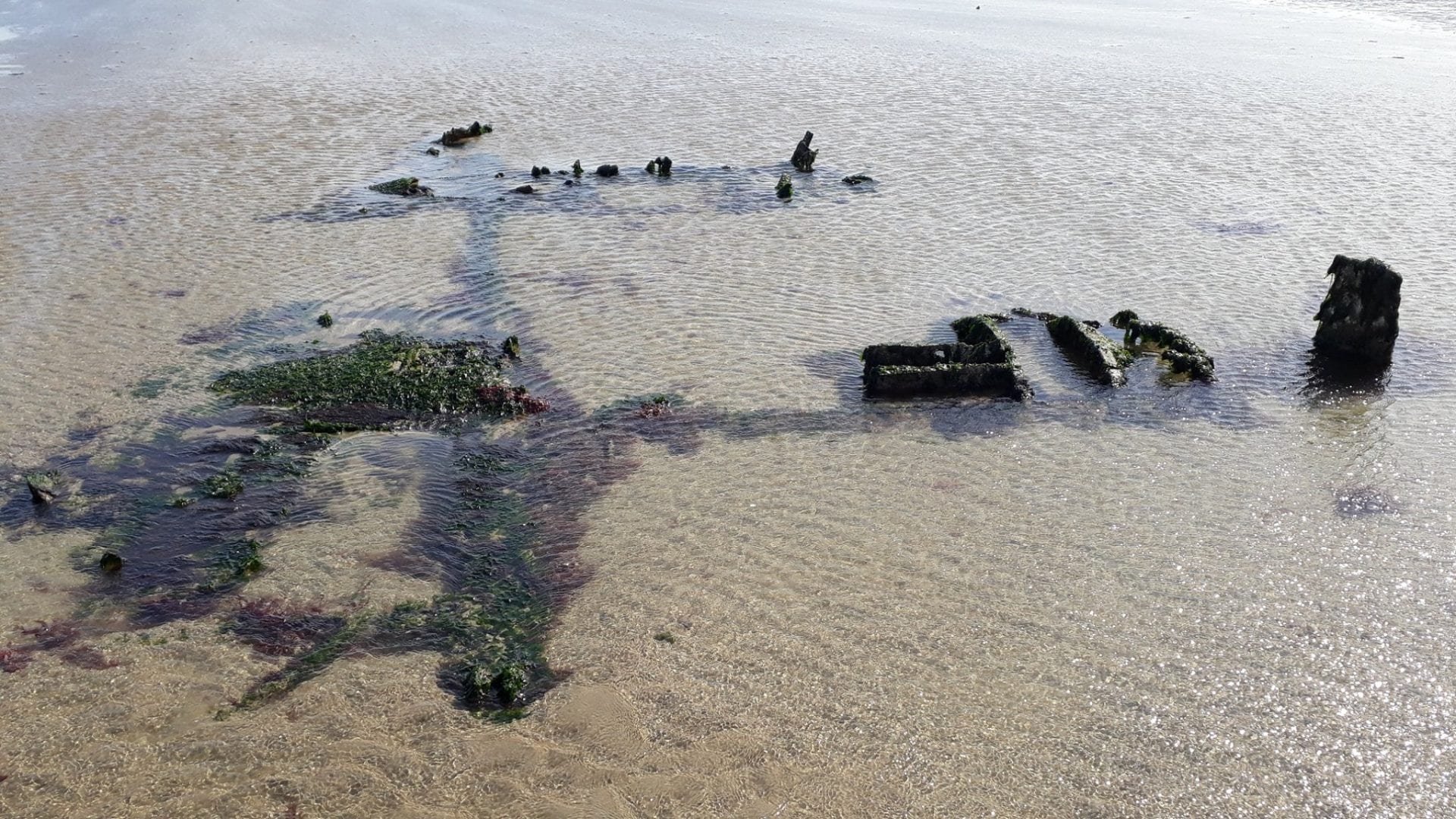Local authorities and heritage organisations have been notified of illegal looting of a B17 Flying Fortress bomber that ditched on the Sandwich Flats in Kent, England, during WW2.
The Flying Fortress was a four-engine heavy bomber developed in the 1930s, that was primarily employed by the USAAF in the daylight strategic bombing campaign of German industrial, military, and civilian targets.
B17G 42-31243 ditched in Sandwich Bay after returning from a mission on the 1st December 1943, when it ran out of fuel due to flak damage to the fuel tanks. All the crew survived the impact, but the plane was left buried in the flats until it was looted in the 1990’s, resulting in an organised excavation to document the surviving remains.

Around five years ago the plane became exposed again in the tidal sands, revealing the wings, two remaining nacelles (without the engines), and a debris field in the area where the fuselage once was, that are regularly displaced in the inter tidal zone of the shoreline.
Over the years, the Sandwich Bay B17 Group has been monitoring the remains and collected the displaced stray finds on the shoreline (with permission) for conservation. These are then reported to the Receiver of Wreck and documented, before being transferred to the RAF Manston History museum.

Tony Ovenden from the group first noticed indications of looting when he realised that areas of solid structure from the plane were missing around the right wing, including two Tokyo tanks, pipes, wiring, and evidence of tampering and disturbance of concreted items in the debris field.
Mr Ovenden recently encountered an individual at the crash site stating: “I thought he was one of my group, but he was in the water pulling at something in the fuselage area. Nearby was a small four-wheeled trolley. When he saw me he quickly walked away. Looking in his trolley, I could see B17 items and lumps of concretion he had been picking up from the debris field.”

Mr Ovended added: “There is now enough evidence that suggests the site is at risk, not so much from small souvenir hunters but collectors motivated by greed. The site is one of the few remaining B17 sites in western Europe where someone can just walk up to, and basically help themselves to a piece. The profile of this site really needs to be raised and not left to the mercy of the elements and looting.”
The Services Archaeology and Heritage Association commented on the report by stating: “It is illegal under The Protection of Military Remains Act 1986, which prohibits entering and tampering with wrecked military vessels or aircraft. The designation of protected places includes the remains of any aircraft which crashed while in military service or any vessel which sank or stranded in military service after 4 August 1914 within the UK.”
Header Image Credit: Tony Ovenden





